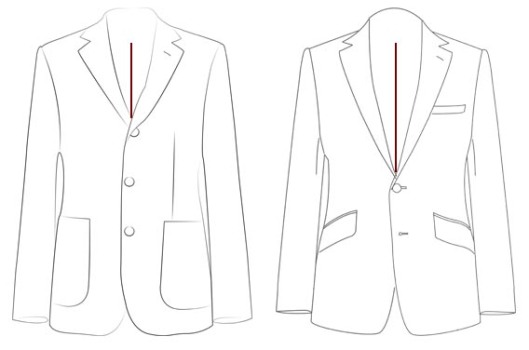Tags
Once a man has settled on the colour of his new suit, the next question should always be “how many buttons should my suit have?”
The answer to this will depend on a few factors, including current fashions, the use of the suit and the size of the gent in question.
Right now, and since the early 2000’s the trend has been strongly in favour of 2 button suits.
Prior to this – in the 80’s and 90’s – three button suits were popular, such as those seen in American Gigolo of 1980. Even before that we can see the popularity of 4 and 5 button suits in the 60’s and 70’s with everyone from the Beatles and the Stones to heads of state sporting Nehru collars (a type of collar that has a band of cloth rather than the tradition fold, running into a lapel).
Generally speaking there is no hard and fast rule for the number of buttons on a suit, but my advice to customers is usually thus:
“For those over 6ft tall, use three buttons to make the body look proportionate, and underplay your height. For those under 6ft use the long V shape of a 2 button suit to elongate your torso” This is nicely illustrated bellow. The red line starts in both cases where a gentleman’s chin might start, and finishes where the suit covers the shirt. In the first case the visible area is significantly reduced, downplaying the size of the torso. In the second case the amount of torso visible is increased dramatically, which lengthens it visually.

A comparison of two and three button suits – with red lines showing the effect on the apparent torso size.
This is a very general rule that is built on the principal that the larger the amount of visible shirt and tie, the longer your torso will look. In taller men this can accentuate their already unusual height which, for those looking to fit into a group or office, can exacerbate a problem that they are trying to fix. On the other hand there are examples of successful, tall men wearing two button suits because it allows them to appear even more dominating in a room, which gives them a tactical advantage, be it in an office or trying to pick up women.
Conversely the number of shorter men who insist on a three button suit is depressing, despite the fact that so much cloth drowns them, making them look even shorter than they would normally. By utilising the lower buttoning point of a two button suit, the shorter man exposes more of his torso, which serves to make more visual impact, making him look taller. This can be aided by choosing a suit with a slightly shorter cut, so that more of the leg is exposed, essentially showing off the body rather than hiding it.
The eagle eyed reader may have noticed that I haven’t said anything about the one button suit. This is because it remains a difficult subject. Traditionally the only suit that should have a single button closure is the tuxedo, and even then fashion brands tend to make theirs with two. Having said that, there are some truly excellent single buttons suits out there; I have them from Chester Barrie (Savile Row), Richard James (Savile Row) and Tom Ford (New York, and designer of the last three James Bond outfits). The trouble is that the fit of the suit has to be nearly perfect, otherwise the wearer ends up looking like they have bought a “fashionable” suit made from cheap materials at a low end high street brand. Once you have a few suits in the wardrobe, know what kind of cut you like and what materials to look for, then you will be much better placed to know whether that one button looks elegant or tacky.
As with so many things from that era, please leave 4 and 5 button suits in the 60s.
***This advice comes with two caveats:
Caveat One: what I have said here applies only to “beginners” looking for suits of the rack (also referred to as OTR). If you are working with the finest Savile Row or Neapolitan tailors and paying £4,000+ for a suit then the tailor will be skilled enough to cut a flattering suit in two or three buttons, no matter your height or frame.
Caveat Two: This advice only applies in Europe and America (north and south). In Asian and some middle eastern cultures suit that is cut more generously, almost to the point is swamping the body is considered a sign of status and wealth. I have tied to track down a documented explanation for this, and the general consensus is that men who could afford to buy more cloth (especially under communism) were obviously wealthier and held better positions within their community. As contact increases with the western world this trend is slowly fading, with international level politicians embracing a closer cut, more flattering look, but for anyone living or working within these communities it is worth seeking the advice of someone who knows and understands the culture before making any decisions. ***
